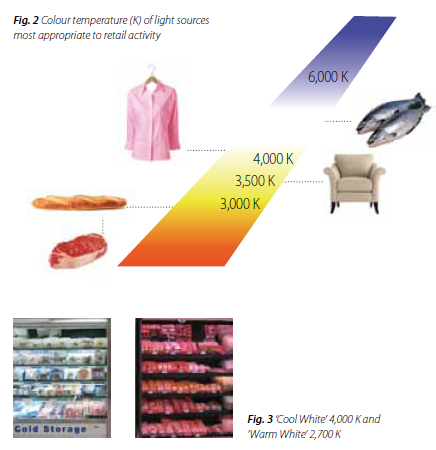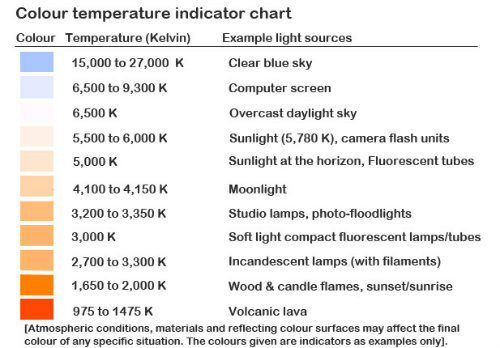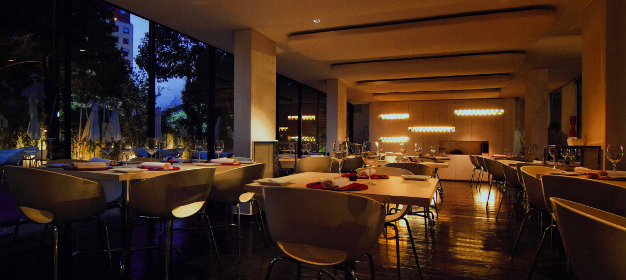 Loading... Please wait...
Loading... Please wait...- About Us
- LED Flood Lights
-
LED Lighting Projects
- Tennis Court LED Lighting Projects & Upgrades
- Netball Court LED Lighting - Case Studies & Projects
- Sporting Oval & Sports Field LED Lighting - Projects & Examples
- Lawn Bowls LED Lighting Projects & Upgrades
- General Area and Security LED Lighting - Projects & Applications
- Factory and Warehouse LED Lighting Projects & Applications
- Industrial LED Lighting Applications and Projects
- Help & Information
- Blog
- Contact Us
- Home
- Help & Information
- LED Buying Guide
- Understanding LED Lighting
- LED Light Colour Temperature
LED Light Colour Temperature
Selecting LED colour temperature depending on the productAnother concept which is probably one of the most useful in LED lighting is colour temperature which determines the shade of yellow or white or white-blue of the LED light or anywhere in between. Typical ideal colour temperatures for various applications are listed in the illustration below.
Colour temperarture and KelvinThe unit of measurement for colour temperature is in degrees Kelvin (K) where lower numbers refer to warmer or yellower colours and higher numbers refer to cooler or whiter colours. Traditional incandescent bulbs or 50W halogen downlights produce which most people are familiar with produce a warm light ranging from 2700K to 3000K. Although with dimming the colour temperature is typically approximately 2200K or a very warm glow. LED light bulbs are typically available in three colour temperatures:
As mentioned later, in the case of LED lighting, another important factor to note is that the higher the colour temperature, the higher the light output. For example, a cool white LED light bulb will have 30-40% more light output than a warm white LED light bulb. The converse can be said for CRI where lower colour temperatures typically have a higher CRI, although the difference of 5 points is not particularly noticeable, with the exception of the colour temperature. Below is a diagram showing the typical colour temperatures of various light sources.
Selecting the right colour temperature for certain roomsWe recommend that customers try to select various colour temperatures for various room types. For example, bedrooms and lounge areas are best suited to warm light colours. Whereas as more modern homes with a lot of white colours can benefit from whiter light colours to bring out the whites in the décor and furniture. Whilst older houses with a lot of wood furnishings can also benefit from warmer colours. Kitchens and bathrooms with a lot of white finishes will again benefit from cooler white colours. Another thing to keep in mind is that dimming a cool white LED light bulb can create a subjectively much “warmer” or “softer” light such that you have the best of both worlds. A bright white light for working and reading under, and a softer or warmer white light for relaxing under. This effect can be beneficial for living areas where you may wan the higher brightness of a cooler light for reading or other intricate activites but the dimmed warmer light for relaxing or mood light or watching television. Insert example image here The best LED colour temperature for working - Natural White to Cool WhiteStudies have also shown that LED lights that simulate daylight promote improved concentration and performance and less drowsiness. This occurs due to the bodies circadian rhythms which respond to different colour temperatures of light which vary depending on the time of the day. So for the office or study area a cooler colour temperature of between 4500K and 5500K is most suitable. Whereas for relaxation or snoozing 2700K to 3000K is more suitable. LED Light Colour Temperature and HealthHaving the right colour light such as a bright natural or cool white can help you to wake up in the morning and is often used to treat sleep disorders particularly relating to shift work. In countries where there is lack of day light between October to March, a day light (natural white) colour can be used to compensate for the lack of light and potentially prevent the occurence of light related disorders such as Seasonal Affective Disorder (SAD). Try our new Warm Glow 2200K LED light for the ultimate relaxed atmosphereWe have developed a new 2200K extra warm glow LED light which matches the colour of a dimmed tungsten or dichroic halogen light bulb. Such a colour light is ideal for relaxing, setting the ambience of a bar, pub or living room, as well as assisting with skin tones.
References: Optimized lighting conditions help students improve. LEDs Magazine, June 2012. The effect of high correlated colour temperature office lighting on employee wellbeing and work performance. Journal of Circadian Rhythms, 2007, 5.2 Sustainable Energy Authority of Ireland, Retail Business, A Guide to Energy Efficient and Cost Effective Lighting.
|




